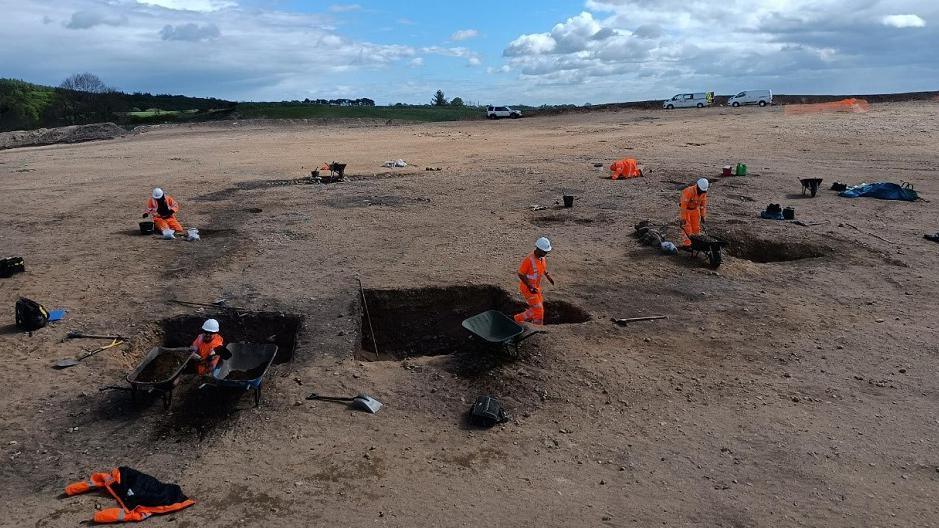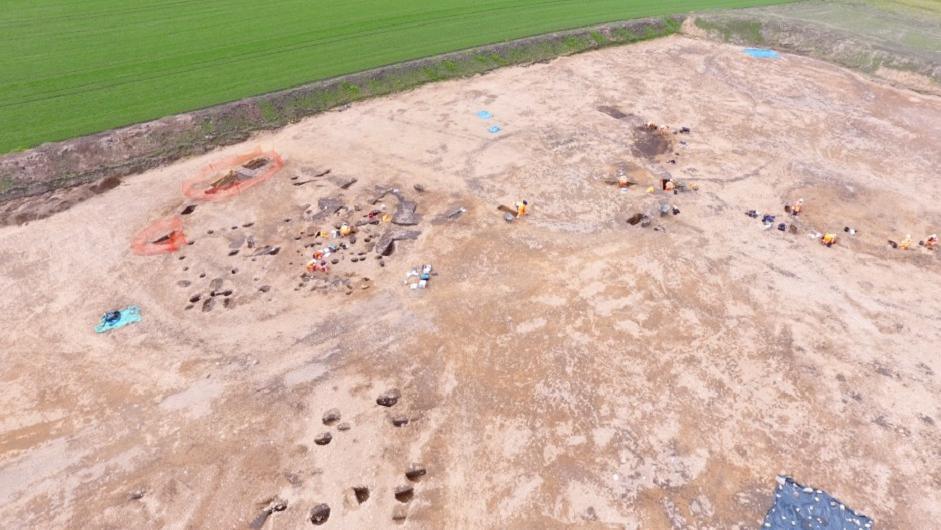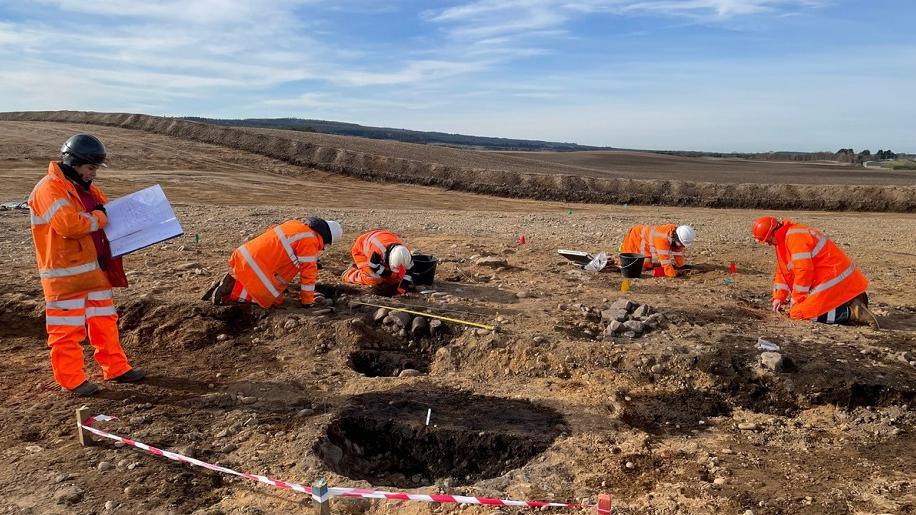Romans may have destroyed Moray metal-working site

Archaeologists have found evidence of extensive metal production near Elgin
At a glance
Archaeologists are investigating a "fascinating and unusual" site in Moray
Metal-working is thought to have been done at Lochinver Quarry from the Bronze Age through the Iron Age
There is evidence suggesting the site was abandoned suddenly
Roman soldiers may have destroyed it following a major battle
- Published
A metal-working site uncovered in Moray may have helped arm Caledonian tribes against the Romans, before being burned down by the invaders.
Archaeologists have described the site at Lochinver Quarry, near Elgin, as fascinating and unusual.
Evidence has been found of metal production over a period of up to 2,000 years from the Bronze Age through the Iron Age.
Archaeologists believe they could end up excavating as many as 40 iron smelting sites.
Prior to these discoveries around 25 such sites have been found for the whole of Scotland.
Lochinver appears to have been abandoned suddenly and homes and other structures burned down.
Archaeologists suggest one possible explanation could be that it may have been the actions of Roman soldiers following their victory over Caledonians at the Battle of Mons Grapius around AD 83.

The site may have been use over a period of 1,500 to 2,000 years
Dr Clive Waddington, of Archaeology Research Services Ltd, said the evidence being found at Lochinver made it different from Moray's other Bronze Age and Iron Age sites.
He said the later metal-working could possibly have been in response to the Roman invasion of Scotland, with iron needed for weapons.
Dr Waddington added: "Something happens on this site that removes any further activity.
"We have got these burnt timbers and abandoned pits for making charcoal.
"We have got pits with roasted ore - a valuable commodity - ready for smelting but just abandoned."
Two cauldrons have also been found buried, possibly by the Lochinver's residents in an effort to hide the highly valued items.
Dr Waddington said it was possible Lochinver was abandoned in the aftermath of Mons Grapius which saw Roman troops and cavalry defeat 30,000 Caledonians.
Suggested locations of the battle include Dunning in Perthshire, Carpow in Fife, Bennachie in Aberdeenshire and Culloden in the Highlands.
Dr Waddington said: "The battle was a big victory for the Romans and could explain why some sites were burned down, with Romans torching sites as they came through after the battle."

Archaeologists have described Lochinver Quarry as fascinating and unusual
Archaeological Research Services Ltd and Aberdeenshire Council are investigating the site supported with funding from building materials company Tarmac.
The work has been further supported by various universities including the radiocarbon dating at University of Glasgow, specialist artefact conservation at University of Durham and expert knowledge from the National Museum of Scotland.